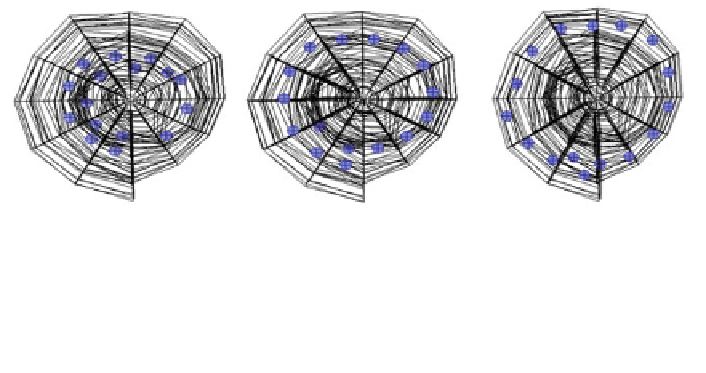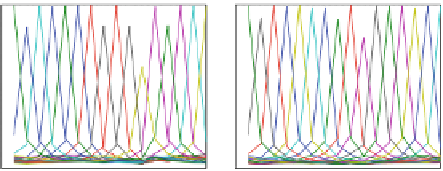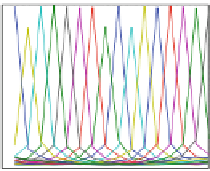Biomedical Engineering Reference
In-Depth Information
(a)
(c)
(b)
Fig. 5
Different electrode positions in the scala tympany on the XZ plane
Mo
d
iolar
Mid
s
calar
La
t
eral
1
1
1
0.9
0.9
0.9
0.8
0.8
0.8
0.7
0.7
0.7
0.6
0.6
0.6
0.5
0.5
0.5
0.4
0.4
0.4
0.3
0.3
0.3
0.2
0.2
0.2
0.1
0.1
0.1
0
0
0
0
2
4
6
8
10
12
14
16
0
2
4
6
8
10
12
14
16
0
2
4
6
8
10
12
14
16
Electrodes
Electrodes
Electrodes
Fig. 6
Electrical field imaging simulations for three different electrode positions (Modiolar, Mid-
scalar and Lateral). Each different colored curve corresponds to excitation of a single electrode,
given by the position of the peak voltage in the electrode array
within this region decays lineraly. Because the reactive component is quite large it is
difficult to observe large differences in the EFI measures for the different electrode
placements without making additional model assumptions.
In the second part of the experiment each electrode was stimulated individually
and the resulting voltage distribution was then measured along the assumed position
of the spiral ganglion pathway for nodes 10, 8 and 7 presented in Fig.
4
a. Figure
7
presents the results of the simulations and Table
3
presents the average width of the
spread of excitation for each node and electrode position. The width is measured as
the distance between the two points placed at 75% with respect to the maximum of
the extracellular voltage. The mean width over all electrodes for the different nodes
has been calculated and can be observed in Table
3
.
FromTable
3
it can be viewed that the width of the spread of excitation depends on
the electrode placement and on the preservation of the auditory nerve. If there is no
auditory nerve degeneration (Node 10), modiolar placement produces wider spread
of excitation thanmidscalar or lateral electrode insertion. However, the opposite trend
is observed for low nerve degeneration (Node 7). This result might be surprising, but
actually it is explained by the fact that for lateral electrode position, the electrodes
are placed closer to node number 10 than in modiolar position producing a narrower
spread of excitation.






























































































































































